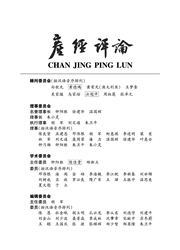

 中文摘要:
中文摘要:
细分外国企业对减排技术的转让方式,使转让方式与东道国环境政策相匹配,是一个有待深入研究的问题。在Stackelberg竞争模型中考虑拥有减排技术的外国企业作为市场跟随者在东道国市场上与东道国企业竞争,分析外国企业减排技术的最优授权方式,提出东道国政府的最优环境政策选择。从分析结论看:固定收费和特许权收费的技术授权都可以增加外国企业利润,但外国企业更偏好于特许权收费的技术授权,而双重收费可能降低外国企业的利润;技术授权对东道国的社会福利不确定,特许权收费的技术授权总可以增加外国社会福利,固定收费和双重收费的技术授权可能恶化外国社会福利;特许权收费和双重收费下减排技术的扩散可以有效改善环境,而固定收费则可能增加排放总量;特许权收费的技术授权需要东道国制定相对宽松的环境政策。东道国政府需要根据不同污染物的污染属性和扩散程度适时调整环境税政策,以实现企业利润、社会福利和环境的共同改善。
 英文摘要:
英文摘要:
We set up a model that a foreign company with an emission reduction technology competes with a host - country company in Stackelberg competition model as a market follower. Through this model, we analyzed the foreign company's optimal licensing strategy and put forward the optimal environmental policy of the host country. It shows that fixed -fee and royalty can increase the profit of foreign company, and royalty brings the foreign company a higher profit. However, two - part tariff may reduce the profits of foreign compa- ny. Licensing has a two side effect on the social welfare of host - country, and it may decrease or increase host - country's social welfare. To the foreign country, royalty is optimal while fixed - fee and two - part tariff may cause the social welfare of foreign country getting worse. The transfer of emission reduction technology through royalty and two - part tariff can reduce pollution emissions effectively and improve the environment quality while fixed - fee may increase the pollution emissions. Through this analysis, the realization of royalty licen- sing needs relatively loose environment policy, which is the best for foreign company, society and environment.
 同期刊论文项目
同期刊论文项目
 同项目期刊论文
同项目期刊论文
 期刊信息
期刊信息
